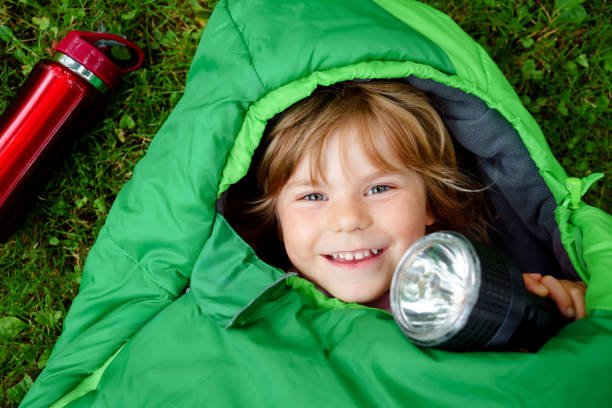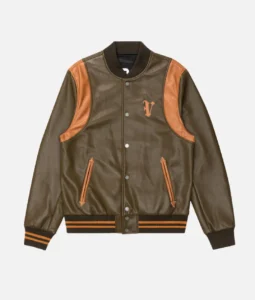When it comes to ensuring your child’s comfort and safety during camping trips, sleepovers, or any overnight adventure, a high-quality sleeping bag can make all the difference. With so many options available in the market, it can be overwhelming to choose the right one for your little one. In this article, we’ll dive into the world of kids’ sleeping bags, exploring the different types, features, and considerations to help you make an informed decision.
Importance of Kids’ Sleeping Bags
Sleeping bags are essential for keeping your child warm and cozy during outdoor excursions or indoor sleepovers. They provide insulation, comfort, and a sense of security, allowing your child to enjoy a good night’s rest in unfamiliar surroundings. A well-designed sleeping bag can also protect your child from the elements, such as cold temperatures, wind, and moisture.
Benefits of Kids’ Sleeping Bags:
- Warmth and insulation: Sleeping bags are designed to trap body heat and provide insulation, keeping your child comfortable throughout the night.
- Portability: Compact and lightweight, sleeping bags are easy to carry and transport, making them ideal for camping trips and travel.
- Versatility: Sleeping bags can be used for various activities, including camping, sleepovers, and even backyard camping adventures.
- Comfort: With their soft, cozy materials and contoured shapes, sleeping bags offer your child a comfortable sleeping environment.
Types of Kids’ Sleeping Bags
When it comes to kids’ sleeping bags, there are several types to choose from, each designed to cater to different needs and preferences.
1. Rectangular Sleeping Bags
Rectangular sleeping bags are the most common and versatile type, offering ample room for your child to move around and sleep comfortably. They typically have a roomier cut, making them ideal for indoor sleepovers or car camping trips.
Benefits of Rectangular Sleeping Bags:
- Spacious and roomy
- Easy to get in and out
- Suitable for warm weather conditions
- Can be unzipped and used as a blanket
2. Mummy Sleeping Bags
Mummy sleeping bags are designed with a tapered shape that hugs the body closely, maximizing warmth and minimizing heat loss. They are perfect for cooler temperatures and are often used for backpacking or camping in cold weather.
Advantages of Mummy Sleeping Bags:
- Excellent insulation and warmth retention
- Lightweight and compact for easy carrying
- Efficient heat retention due to the snug fit
- Ideal for cold weather camping or winter adventures

3. Semi-Rectangular Sleeping Bags
Semi-rectangular sleeping bags offer a happy medium between rectangular and mummy bags. They provide a roomier interior than mummy bags while still retaining some of the heat-trapping benefits of a tapered design.
Benefits of Semi-Rectangular Sleeping Bags:
- More spacious than mummy bags
- Better heat retention than rectangular bags
- Versatile for various weather conditions
- Suitable for both indoor and outdoor use
4. Double-Wide Sleeping Bags
Double-wide sleeping bags are designed to accommodate two children or a child and an adult. These spacious bags are perfect for family camping trips or sleepovers with friends, allowing your child to share the cozy experience with a companion.
Advantages of Double-Wide Sleeping Bags:
- Ample space for two people
- Great for bonding and sharing experiences
- Ideal for family camping trips or sleepovers
- Offers warmth and comfort for both occupants
Choosing Kids’ Sleeping Bags
When selecting a sleeping bag for your child, there are several factors to consider to ensure a comfortable and safe experience.
1. Temperature Rating
Temperature rating is a crucial factor when choosing a sleeping bag, as it indicates the bag’s ability to keep your child warm in different weather conditions. Sleeping bags are typically rated for specific temperature ranges, such as summer, three-season, or winter.
- Summer sleeping bags are lightweight and designed for warmer temperatures, typically rated for temperatures above 35°F (1.7°C).
- Three-season sleeping bags are versatile and can be used in spring, summer, and fall, rated for temperatures between 15°F (-9.4°C) and 35°F (1.7°C).
- Winter sleeping bags are heavily insulated and designed for frigid temperatures, rated for temperatures below 15°F (-9.4°C).
2. Insulation Type
Sleeping bags can be insulated with either synthetic or down insulation, each with its advantages and disadvantages.
- Synthetic insulation is typically made from polyester or other synthetic fibers. It retains warmth even when wet and is easier to care for and maintain.
- Down insulation, made from the soft under feathers of ducks or geese, is lightweight, compressible, and highly efficient at trapping body heat. However, it loses its insulating properties when wet and can be more expensive.
3. Size and Fit
Choosing the right size and fit for your child’s sleeping bag is crucial for their comfort and warmth. Sleeping bags that are too large can allow heat to escape, while those that are too small can be restrictive and uncomfortable.
- Check the manufacturer’s size chart and compare it to your child’s height and weight to ensure a proper fit.
- Consider leaving some room for growth, especially for younger children, to extend the bag’s lifespan.

4. Weight and Packability
If you plan on hiking or backpacking with your child, the weight and packability of the sleeping bag become important factors to consider.
- Lightweight and compact sleeping bags are easier to carry and take up less space in your backpack or gear.
- However, lighter bags may sacrifice some insulation or warmth, so finding the right balance is key.
5. Features and Extras
Many kids’ sleeping bags come with additional features and extras that can enhance your child’s camping or sleepover experience.
- Integrated hood or draft collar: Helps prevent heat loss from the head and neck area.
- Zipper draft tubes: Prevent cold air from entering through the zipper.
- Internal pockets: Provide a convenient space for storing small items like a flashlight or snacks.
- Compression sack: Allows for compact storage and easy transportation.
Comparison of Kids’ Sleeping Bag Types
| Type | Temperature Rating | Insulation | Fit | Weight | Best for |
|---|---|---|---|---|---|
| Rectangular | Warm weather | Synthetic or Down | Roomy | Moderate | Indoor sleepovers, car camping |
| Mummy | Cold weather | Synthetic or Down | Snug | Lightweight | Backpacking, cold weather camping |
| Semi-Rectangular | Three-season | Synthetic or Down | Moderate | Moderate | Versatile indoor/outdoor use |
| Double-Wide | Warm weather | Synthetic or Down | Spacious | Heavy | Family camping, sleepovers |
FAQs About Sleeping Bags for Kids
1. What is the best insulation type for kids’ sleeping bags?
Both synthetic and down insulation have their advantages and drawbacks. Synthetic insulation is more affordable, easier to care for, and retains warmth when wet. Down insulation, on the other hand, is lighter, more compressible, and provides a superior warmth-to-weight ratio. The choice depends on your child’s specific needs, the intended use, and your budget.
2. How do I determine the right temperature rating for my child’s sleeping bag?
The appropriate temperature rating depends on the expected weather conditions and the camping environment. For summer camping or indoor sleepovers, a summer sleeping bag rated for temperatures above 35°F (1.7°C) should suffice. For cooler conditions or shoulder seasons, consider a three-season bag rated for 15°F (-9.4°C) to 35°F (1.7°C). For winter camping or extremely cold temperatures, choose a winter sleeping bag rated below 15°F (-9.4°C).
3. Can kids’ sleeping bags be machine-washed?
Most kids’ sleeping bags are machine-washable, but it’s essential to follow the manufacturer’s instructions carefully. Some may require hand washing or professional cleaning. Proper care and cleaning will help extend the life of your child’s sleeping bag and maintain its insulating properties.
4. How do I choose the right size sleeping bag for my child?
Refer to the manufacturer’s size chart and compare your child’s height and weight measurements. It’s generally recommended to choose a slightly larger size to accommodate growth and allow for ample room to move around comfortably. Consider leaving a few inches of extra length for taller children.
5. Can kids’ sleeping bags be used for adults?
While adults can use kids’ sleeping bags in a pinch, it’s not recommended for regular use. Kids’ sleeping bags are designed with smaller dimensions and may not provide adequate warmth, length, or shoulder girth for most adults. For optimal comfort and warmth, adults should invest in sleeping bags specifically designed for their size and needs.
6. How do I store a kids’ sleeping bag properly?
Proper storage is essential to maintain the longevity and performance of a sleeping bag. After use, ensure the sleeping bag is completely dry before storing it in a cool, dry place, away from direct sunlight and moisture. Store it loosely in a breathable storage sack or hang it to prevent compression and damage to the insulation.
7. Are there any safety considerations for kids’ sleeping bags?
Safety should be a top priority when using sleeping bags with children. Ensure the sleeping bag is not too tight or restrictive, allowing your child to move around and exit easily if needed. Avoid sleeping bags with loose drawstrings or cords that could pose a strangulation hazard. Additionally, supervise young children closely when using sleeping bags to prevent potential suffocation risks.
8. How often should I replace my child’s sleeping bag?
The lifespan of a sleeping bag depends on various factors, including the quality of materials, frequency of use, and proper care and maintenance. As a general guideline, you may need to replace your child’s sleeping bag every 3-5 years, or sooner if it shows signs of excessive wear, compression, or loss of insulating properties.
My Closing Words
Choosing the right kids’ sleeping bag is essential for ensuring your child’s comfort, warmth, and safety during outdoor adventures or indoor sleepovers. By considering factors such as temperature rating, insulation type, size and fit, weight and packability, and additional features, you can find the perfect sleeping bag that meets your child’s needs and preferences.












